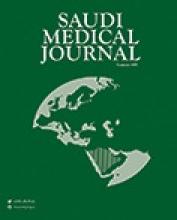Abstract
This primary-source study of 4 medical works of the 13th century Muslim scholar Ibn Al-Nafis confirmed that his Kitab Al-Mujaz Fi Al-Tibb was authored as an independent book meant to be a handbook for medical students and practitioners not as an epitome of Kitab Al-Qanun of Ibn Sina as thought by recent historians. His huge medical encyclopedia, Al-Shamil, represents a wave of intense scientific activity that spread among the scholars of Cairo and Damascus following the massive destruction of books by Hulako's Army during the devastation of Baghdad in 1258. Like his predecessors in the Islamic Era, Ibn Al-Nafis critically appraised the views of scholars before him in the light of his own experimentation and direct observations. Accordingly, in his books Sharh Tashreeh Al-Qanun, Risalat al-Aadaa and Al-Risalah Al-Kameleyyah, we find the first description of the coronary vessels and the true concept of the blood supply of the heart as well as the correct description of the pulmonary circulation and the beginnings of the proper understanding of the systemic circulation. Those discoveries of Ibn Al-Nafis, translated to Latin by Andreas Alpagus printed in Venice in 1547, appeared, 6 years later, in the Christianismi Restituto of Servetus and, in 1555, in the De Fabrica Humani Corporis of Vesalius 2nd edition then in the works of Valvarde 1554, Columbus 1559, Cesalpino 1571, and finally Harvey in 1628. Furthermore, this study documented several other contributions of Ibn Al-Nafis to the progress of human functional anatomy and to advances in medical and surgical practice.
- Copyright: © Saudi Medical Journal
This is an open-access article distributed under the terms of the Creative Commons Attribution-Noncommercial-Share Alike 3.0 Unported, which permits unrestricted use, distribution, and reproduction in any medium, provided the original work is properly cited.






